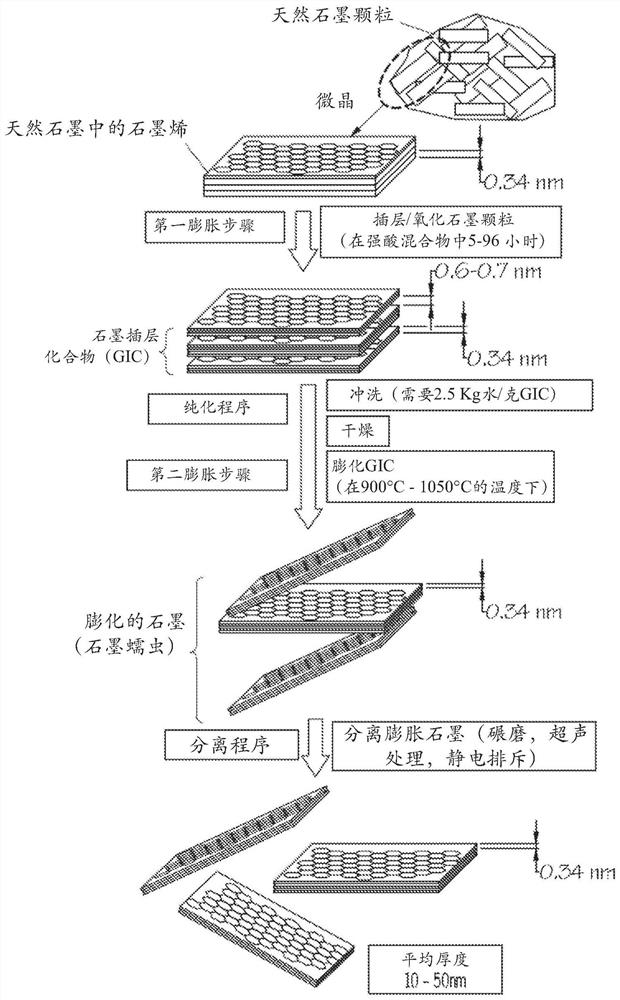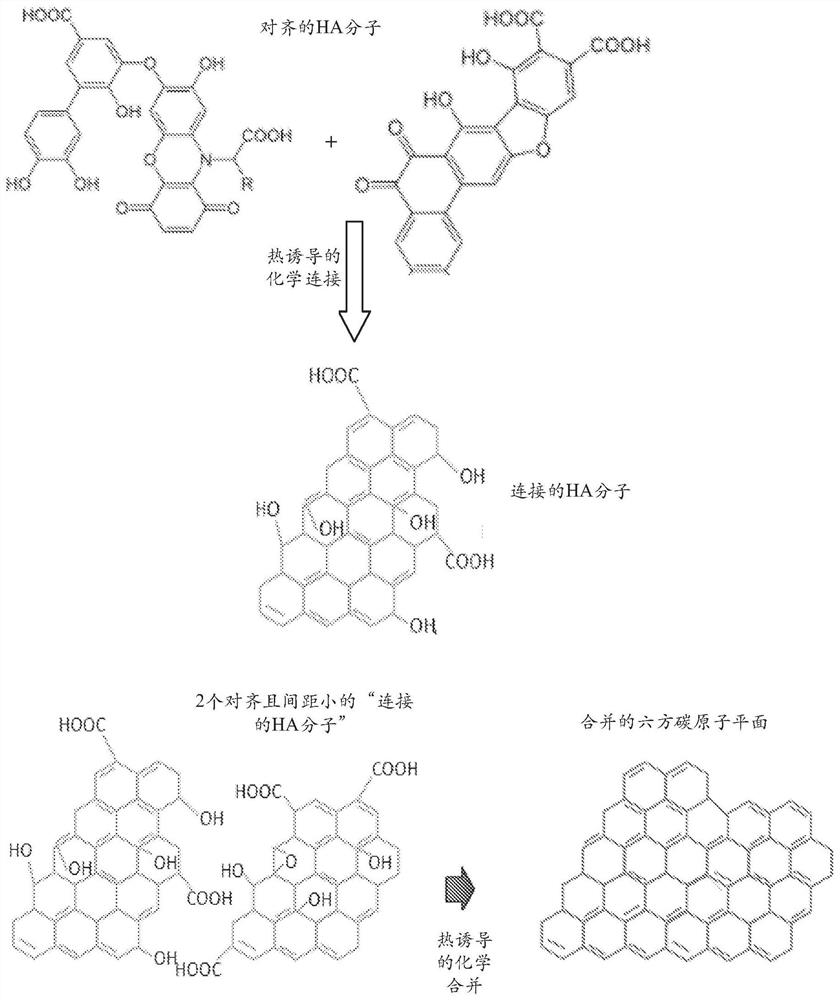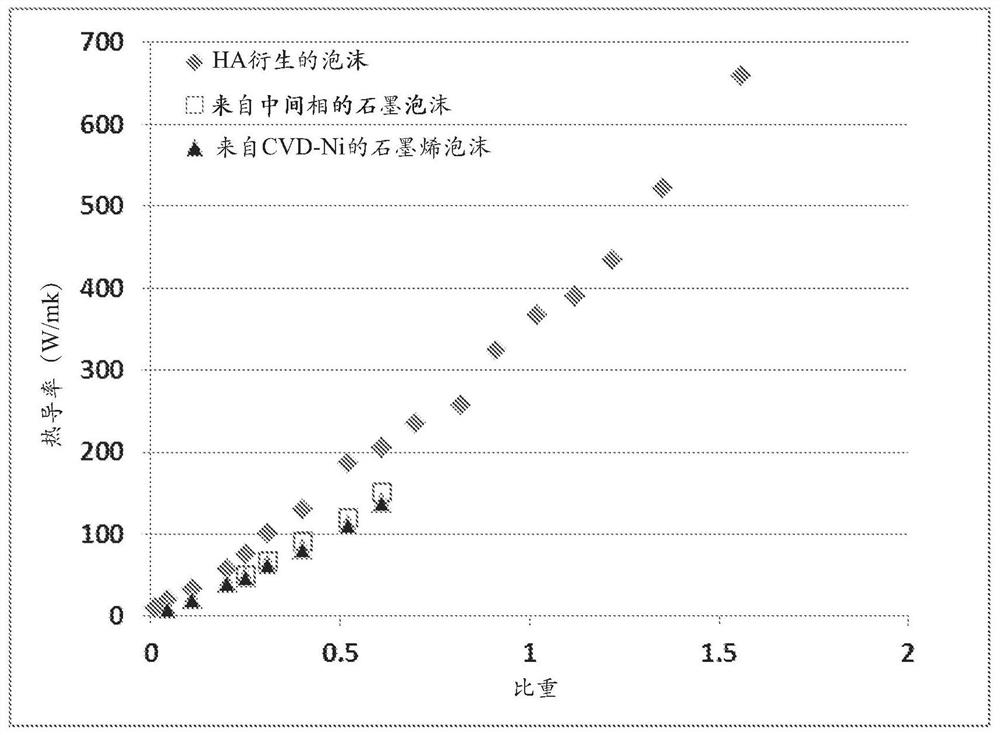Humic Acid Derived Conductive Foams and Devices
A humic acid and foam technology, applied in the field of foam devices, can solve the problems of impractical industrial scale production, slow catalytic CVD, and highly undesirable
- Summary
- Abstract
- Description
- Claims
- Application Information
AI Technical Summary
Problems solved by technology
Method used
Image
Examples
example 1
[0155] Example 1: Humic and reduced humic acids from weathered lignite
[0156] Humic acids can be extracted from weathered lignite with very high yields (in the range of 75%) by dispersing the weathered lignite in an alkaline aqueous solution (pH 10). Subsequent acidification of the solution resulted in the precipitation of humic acid powder. In one experiment, 300 ml of 1M KOH (or NH 4 OH) solution twice deionized water to dissolve 3g of weathered lignite. Adjust the pH to 10. The solution is then filtered to remove any large particles or any residual impurities. The resulting humic acid dispersions containing HC alone or in the presence of a blowing agent were cast onto glass substrates to form a series of films for subsequent heat treatment.
[0157] In some samples, a chemical blowing agent (hydrazonodicarboxamide) was added to the suspension just before casting. The resulting suspension was then cast onto a glass surface using a doctor blade to apply shear stress, c...
example 2
[0159] Example 2: Various blowing agents and methods of forming cells (generating air bubbles)
[0160] In plastics processing, chemical blowing agents are mixed into plastic pellets in powder or pellet form and dissolved at elevated temperatures. Above a certain temperature specified for the dissolution of the blowing agent, gaseous reaction products (usually nitrogen or CO 2 ), which acts as a blowing agent. However, chemical blowing agents are not soluble in graphene materials, which are solids rather than liquids. This presents a challenge for generating pores, or cells, in graphene materials using chemical blowing agents.
[0161] After extensive experimentation, we found that almost any chemical blowing agent (eg in powder or pellet form) can be used to generate pores or bubbles in the dry graphene layer when the first heat treatment temperature is sufficient to activate the blowing reaction. A chemical blowing agent (powder or pellets) can be dispersed in a liquid me...
example 3
[0166] Example 3: Preparation of Humic Acid from Coal
[0167] In a typical procedure, 300mg of coal was suspended in concentrated sulfuric acid (60ml) and nitric acid (20ml) and followed by cup sonication for 2h. The reaction was then stirred and heated in an oil bath at 100°C or 120°C for 24h. The solution was cooled to room temperature and poured into a beaker containing 100 ml of ice, followed by the addition of NaOH (3M) until pH 7 was reached.
[0168] In one experiment, the neutral mixture was then filtered through a 0.45-mm polytetrafluoroethylene membrane, and the filtrate was dialyzed in a 1,000 Da dialysis bag for 5 days. For larger humic acid tablets, the time can be shortened to 1 h to 2 h using cross-flow ultrafiltration. After purification, the solution was concentrated using rotary evaporation to obtain solid humic acid flakes. These individual humic acid flakes and their mixtures with blowing agents were redispersed in solvents (ethylene glycol and alcohol,...
PUM
| Property | Measurement | Unit |
|---|---|---|
| density | aaaaa | aaaaa |
| density | aaaaa | aaaaa |
| thickness | aaaaa | aaaaa |
Abstract
Description
Claims
Application Information
 Login to View More
Login to View More - R&D
- Intellectual Property
- Life Sciences
- Materials
- Tech Scout
- Unparalleled Data Quality
- Higher Quality Content
- 60% Fewer Hallucinations
Browse by: Latest US Patents, China's latest patents, Technical Efficacy Thesaurus, Application Domain, Technology Topic, Popular Technical Reports.
© 2025 PatSnap. All rights reserved.Legal|Privacy policy|Modern Slavery Act Transparency Statement|Sitemap|About US| Contact US: help@patsnap.com



